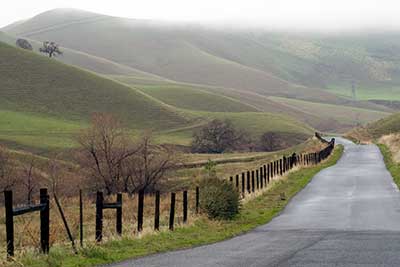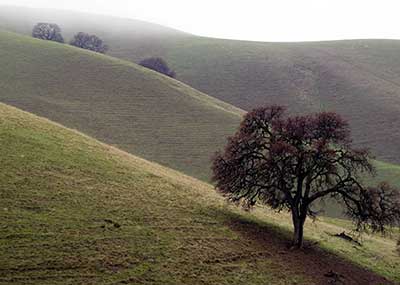National Register of Historic Places in Contra Costa County
Mount Diablo Coal Field (Black Diamond Mines)
Somersville Road
Black Diamond Mines Regional Park
This Historic District is also California Historical Landmark 932.
The Black Diamond Mines were prospected for coal in the mid-1850s. Five towns grew up around the pitheads. The coal mining boom lasted until the first decade of the 20th century, when the last of the mines was closed and all of the towns deserted. Later, from about 1925 to 1951, high silica sand was mined in the area.
The Black Diamond Mines produced four-fifths of the lignite ever mined in California. At their height, in the 1870s, the mines produced over 40% of the coal on the San Francisco market. In that era of stream power, the contribution of the Black Diamond Mines to the development of industry and bulk transportation in the San Francisco Bay area can hardly be overstated.
The sand mines contributed to the San Francisco Bay area's heavy steel and, to a lesser extent, container glass industries. These mines were the most important source of high silica sand used in California's steel foundries during the formative period of this industry, during the 1920s to the 1940s. The availability of high silica sand contributed toward the development of heavy industry, including wartime shipbuilding, in the eastern part of the San Francisco Bay area.
The Black Diamond Mines district contains three of the five settlements that grew up around the coal mines: Nortonville, Somersville, and Stewartville. The remains themselves consist of many house platforms, cellar holes, trails, exotic vegetation, and other landscape features. The townsites are an integral element of this coal mining complex that had such a major effect on California's incipient industry and commerce. Furthermore, Wortonville and Somersville were predominantly Welsh communities and represent an intensity of ethnic Welsh population and culture probably unmatched outside the coal mining areas of Pennsylvania and certainly unique in the West. The re-establishment of folk institutions, the continuity of economic practices that did not challenge traditional family roles, and the isolation of the site allowed a virtual re-creation of Welsh society.
Two hundred and seventy-two individual features have been recorded in the district.

